Recent Articles
Popular Makes
Body Types
2021 Kia K5 vs. 2021 Honda Accord
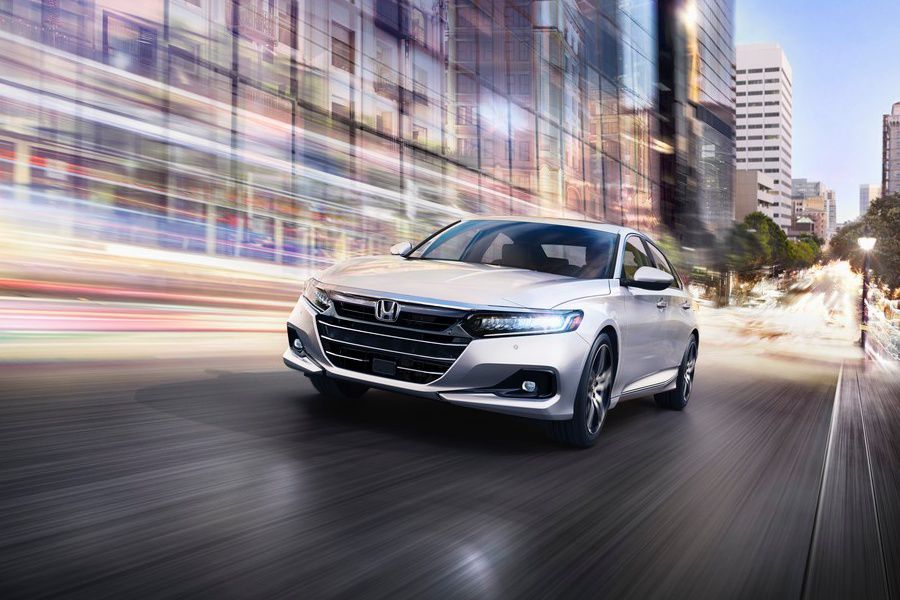
2021 Honda Accord Touring 2.0T ・ Photo by Honda
The Honda Accord is the mid-size sedan that famously does it all. It’s spacious, it’s comfortable, and it’s fuel-efficient, yet it’s also sporty, fun to drive, and distinctive-looking. But this year, the Accord faces an all-new rival: the 2021 Kia K5, which replaces the Optima as the Korean brand’s mid-size sedan.
The K5 brings its own unique styling, high-end infotainment, and rare features like optional all-wheel drive. Is that enough to make it better than the Accord? Let’s go over how the two sedans compare in various ways, and which is our top pick overall.
Exterior Design
Neither the Accord nor the K5 is among the more conservative-looking mid-size sedans. They both have aggressively upright front ends and sleek rooflines that sweep back toward short trunk lids.
The K5 is perhaps the more distinctive of the two, thanks to a couple of unusual design elements: a rear lightbar connecting the taillamps and black trim on the trunk lid that makes the rear windshield look larger. The K5 is also a less common sight than the Accord, both because it’s an all-new design (the 2021 Accord brings a new grille but has few other changes since 2018) and because the K5 will always sell in lower volume than the ubiquitous Accord. You’ll decide for yourself which one is the more attractive design, though.
Tie
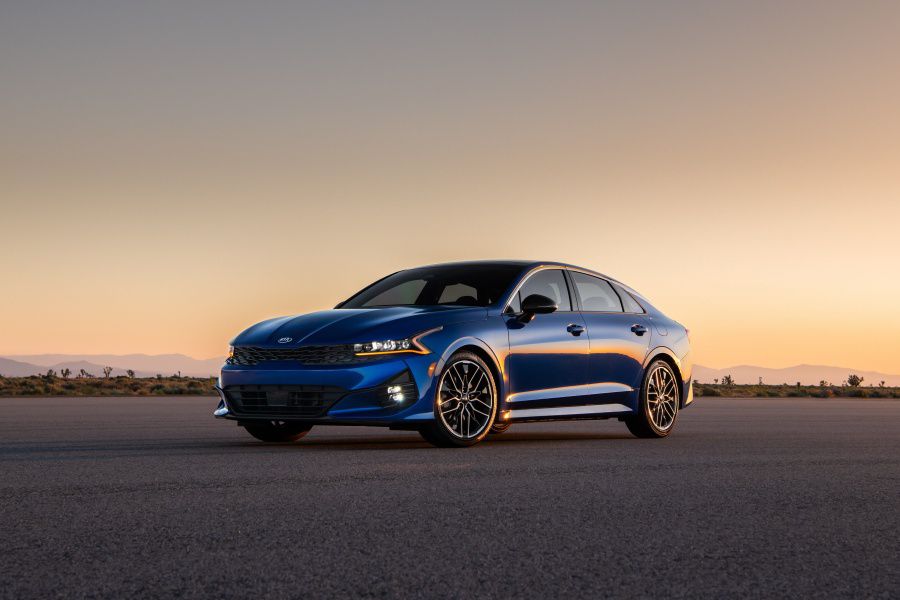
Photo by Kia
Interior Design
Inside, the Accord and K5 are less bold than their exteriors might suggest. But both are wholly contemporary, with generously sized infotainment screens mounted high on their slimmed-down dashboards.
The Accord has a simple, symmetrical dashboard layout. Its 8-inch infotainment screen, now standard equipment on all trim levels, sits right at the middle of the dash. The K5 has a sportier driver-centric layout; its center screen is visually integrated with the gauge cluster, and it angles slightly toward the driver. Both cabins have refreshingly simple controls and high-quality materials. The K5 takes the edge for its more advanced infotainment, though: Not only is Kia’s system more responsive than Honda’s, but the K5 lets you upgrade to a big 10.3-inch screen instead of the standard 8-inch one. The bigger screen lets you see more information at once without needing to switch back and forth between, say, navigation directions and audio-system information.
Kia K5
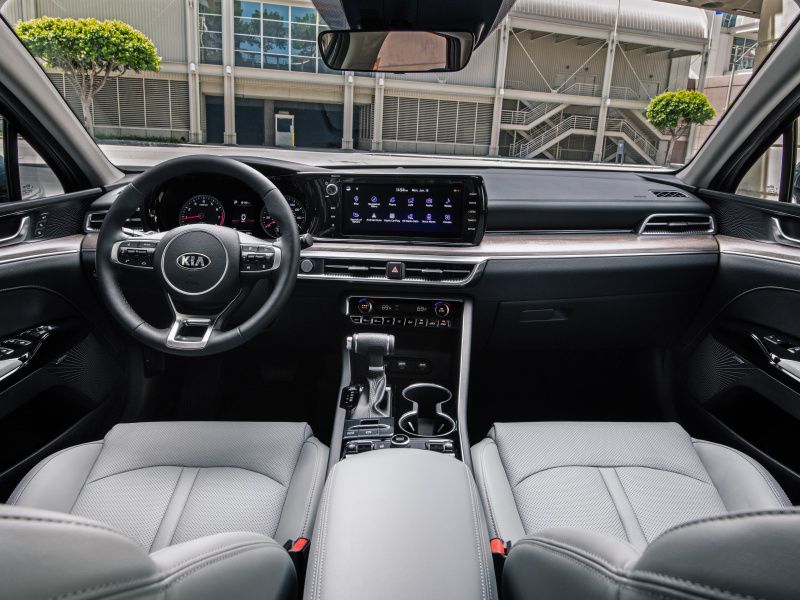
Photo by Kia
Interior Space and Comfort
The Accord is several inches longer than the K5, and Honda puts that space to good use. The K5 does have a comfortable and spacious interior and trunk, and — like the Accord — it has a sporty low seating position. Still, the Accord goes the extra mile with significantly more rear legroom along with a slightly bigger trunk (16.7 cubic feet to the Kia’s 16.0).
The Kia does have the advantage of ventilated front seats; they're included on the affordably priced K5 EX trim level ($27,990), while Honda makes you step up to the Accord Touring 2.0T ($36,700). But on the other hand, Honda upholsters the seats of most Accord trim levels in genuine leather, while Kia offers nothing more upscale than vinyl leatherette even on its top-of-the-line K5. Overall, the Honda comfortably wins this category — no pun intended.
Honda Accord

Photo by Honda
Ride and Handling
The new Kia K5 drives better than the Optima it replaces. Firmer steering and superior suspension composure help it feel more solid and upscale than its predecessor, even as its ride remains agreeably comfortable and quiet.
Still, the Accord provides a more sophisticated, upscale, and sporty driving experience. The steering is sharper, and it stays precise even at the higher speeds where the Kia becomes more vague. And the Honda’s available adaptive suspension dampers deliver the buttoned-down performance of a luxury sports sedan. Our only caveat is that two common Accord trim levels — the Sport and the newly introduced Sport Special Edition — have big 19-inch wheels that can result in a harsher ride quality, so take a careful test drive before buying one of those models.
Honda Accord
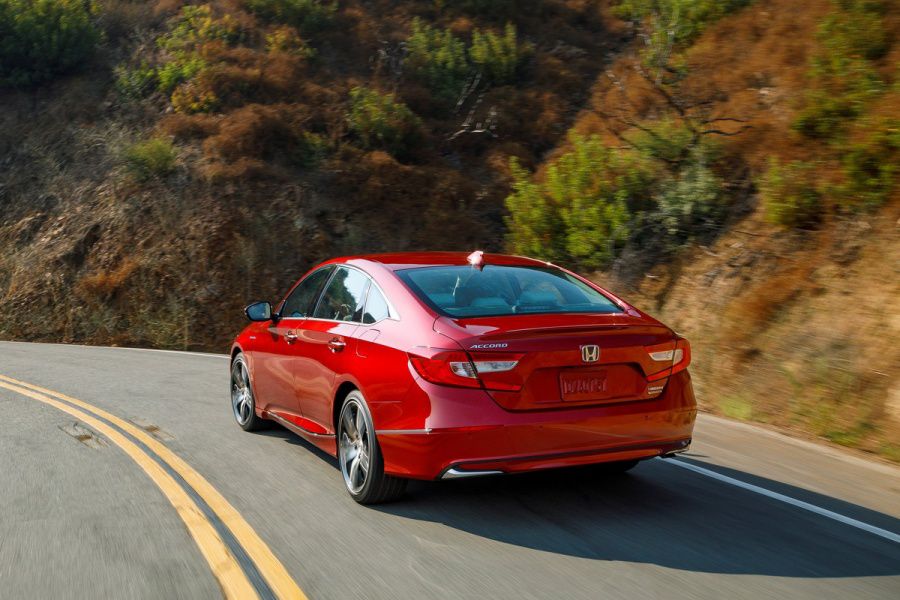
Photo by Honda
Engines and Transmissions
Honda has long been known for magnificently smooth, responsive engines, and the Accord’s available 2.0-liter turbocharged four-cylinder lives up to that standard. On paper, this engine’s 252 horsepower is nothing special, but it’s perfectly matched to a hyper-responsive 10-speed automatic transmission to whisk the Accord forward with equal parts speed and refinement.
However, most Accords instead have a 1.5-liter four-cylinder turbo that makes 192 horsepower. That’s impressive output for a base model, and it tops the base 1.6-liter K5’s 180 hp. But while the 1.5-liter Accord is agreeably quick (and also slightly quicker than the K5 by many stopwatches), the Kia’s engine is silky-smooth. It’s nearly silent when you drive it gently, and it has a sporty growl when you dig in to the throttle. In contrast, the Accord’s engine is more of a dull hum — not objectionable, but not as special. And it has a continuously variable automatic transmission (CVT), which creates more of a droning note under acceleration than the K5’s conventional eight-speed automatic. Furthermore, buyers seeking maximum power can be tempted by the K5’s optional 2.5-liter 290-horsepower turbo.
Kia K5
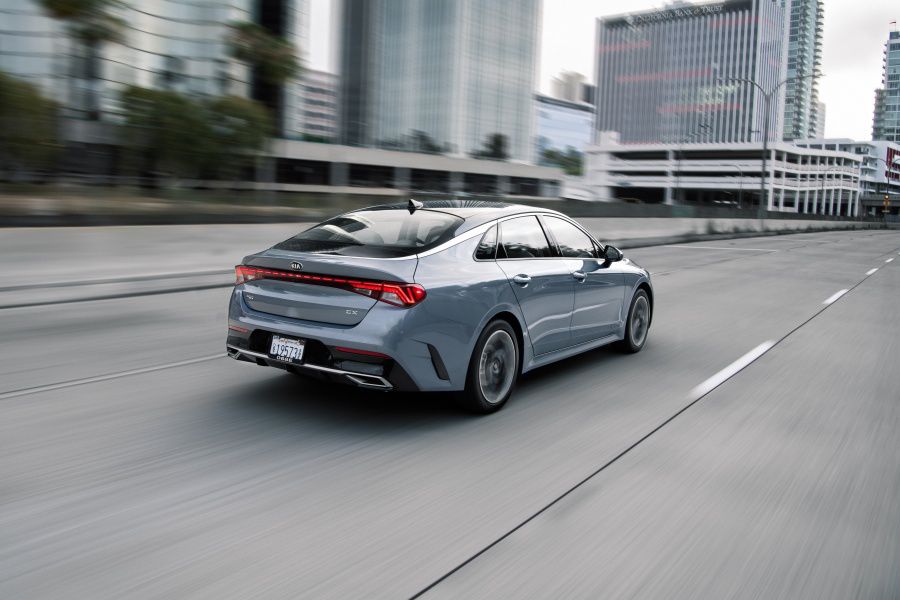
Photo by Kia
Fuel Economy
The Accord’s continuously variable transmission may not inspire passion, but it has the agreeable side effect of superior fuel efficiency. CVTs always maintain an optimally efficient gear ratio, rather than needing to shift among possible gears. And while that creates the unnatural experience of a steady engine RPM during acceleration, rather than a rising and falling of revs as a transmission makes its way through the gears, a CVT can help stretch a gallon of gas farther.
The1.5-liter Accord achieves an EPA-estimated 30 mpg in the city, 30 mpg on the highway, and 33 miles per gallon overall in its base LX and well-equipped EX-L trim levels. Big 19-inch wheels knock the Sport and Sport Special Edition to 29 mpg city / 35 mpg highway / 32 mpg combined. The K5 gets 29 mpg city / 38 mpg highway / 32 mpg combined in its base LX model only, while other trim levels get 27 mpg city / 37 mpg highway / 31 mpg combined. Impressively, the K5’s 290-horsepower 2.5-liter engine does beat the Accord’s 252-horsepower 2.0-liter (27 mpg vs. 26 mpg overall), but the Accord wins out between the engines most people buy. Also, unlike the K5, the Accord is available as a gas-electric hybrid; the 2021 Accord Hybrid manages 48 mpg in EPA testing.
Honda Accord
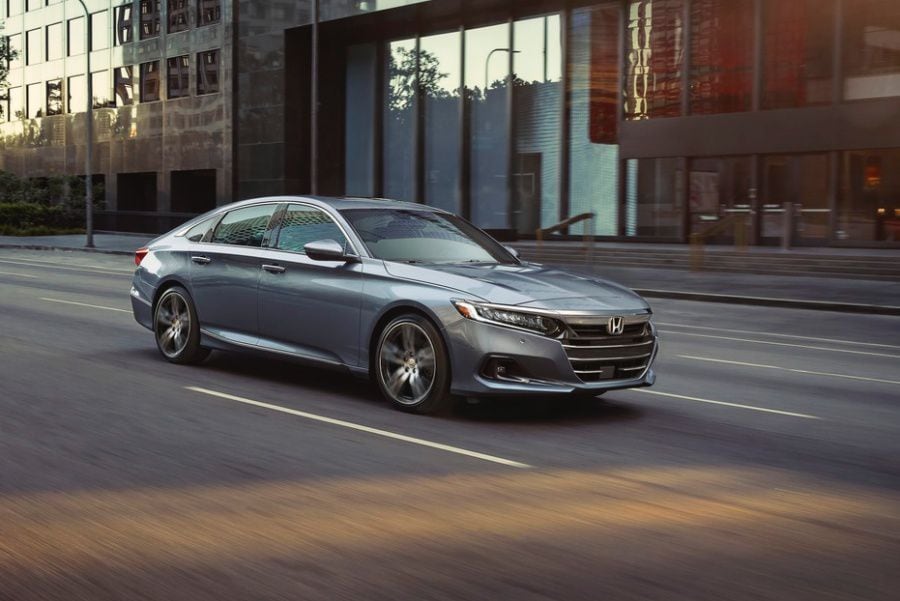
Photo by Honda
Safety
Both the K5 and the Accord have excellent crash-test scores and a long list of standard safety features. Both include a forward-collision warning with automatic emergency braking and pedestrian detection, a lane-departure warning with lane-keeping and lane-following capabilities, and automatic high beams. The Accord also includes adaptive cruise control, while the K5 counters with a leading-vehicle-departure alert; Kia also provides blind-spot monitoring with a rear cross-traffic alert on almost all K5 models, while Honda saves that system for upper-trim Accords.
To break this virtual tie, the Accord pulled slightly ahead for crash-test performance. While the K5 earned a top overall five-star rating from the National Highway Traffic Safety Administration, the Accord went further with perfect marks on each evaluation (the K5 slipped to four stars for frontal-impact protection and rollover resistance). The Accord earned an IIHS Top Safety Pick designation from the Insurance Institute for Highway Safety; while the IIHS hasn’t tested the K5, the mechanically related Hyundai Sonata matched the Accord with a Top Safety Pick designation.
Honda Accord
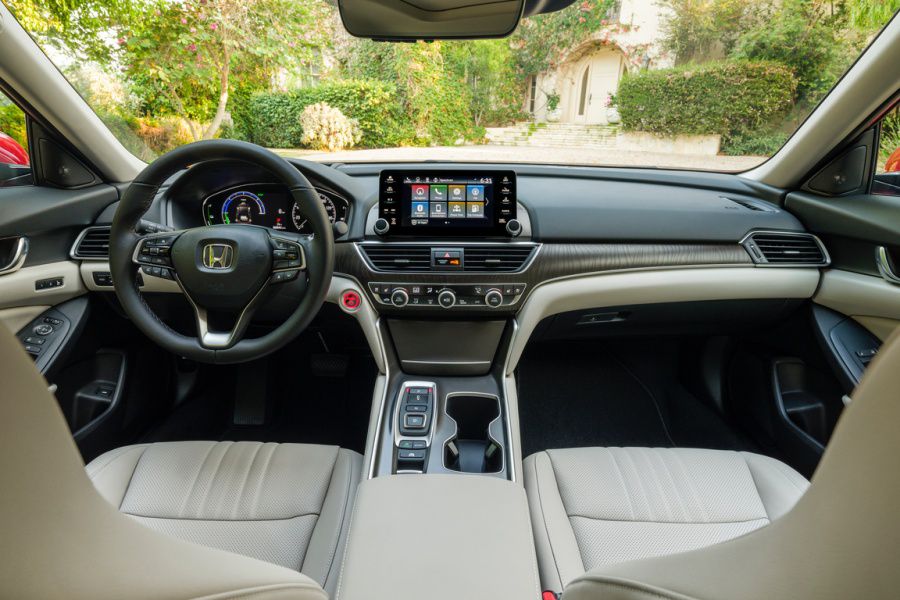
Photo by Honda
Pricing and Features
Kia is known as a value-oriented brand, and true to form, the 2021 Kia K5 is packed with standard equipment even at low prices. It starts at $23,490 with a generous complement of safety and infotainment features. And you don’t need to step up to a pricey model to get high-end add-ons like a panoramic sunroof, ventilated front seats, blind-spot monitoring, and all-wheel drive.
The 2021 Honda Accord isn’t that expensive either, starting at $24,770 with pretty generous standard equipment as well. But you can’t get an Accord with a panoramic sunroof or all-wheel drive, and blind-spot monitoring and ventilated front seats are limited to pricier trim levels. The Accord does include adaptive cruise control as standard equipment (it’s restricted to high-end K5 models), and it’s available with genuine leather instead of the Kia’s synthetic equivalent. But overall, Kia provides more features for the money.
Kia K5
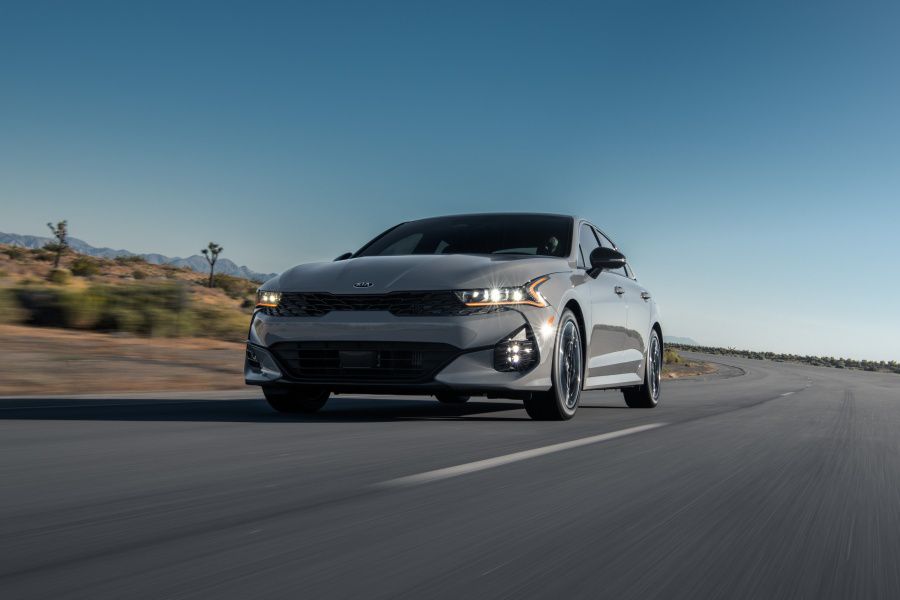
Photo by Kia
Final Thoughts
The 2021 Kia K5 delivers a lot of style, technology, and features at reasonable prices. It’s comfortable, it’s well-finished, and its base engine is impressively smooth. It has a long warranty and is offered with all-wheel drive.
But overall, the 2021 Honda Accord is even more impressive. It’s more fun to drive, yet also more spacious and — in most configurations — more fuel-efficient. The Accord does cost a little more than the K5, and the base Accord engine doesn’t sound as nice as the Kia’s. But for many buyers, we think the Honda will be worth the extra money.
Honda Accord
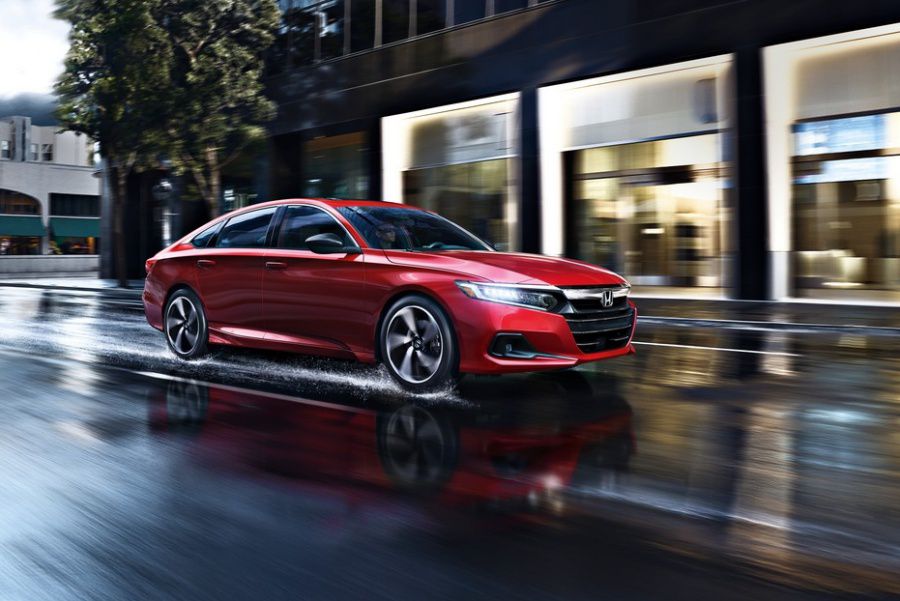
Photo by Honda